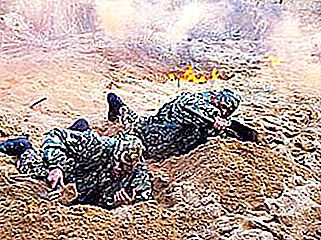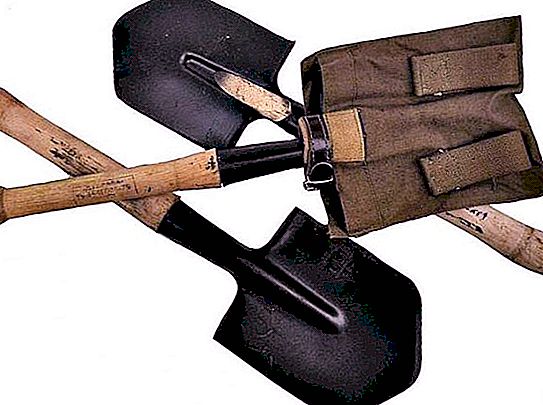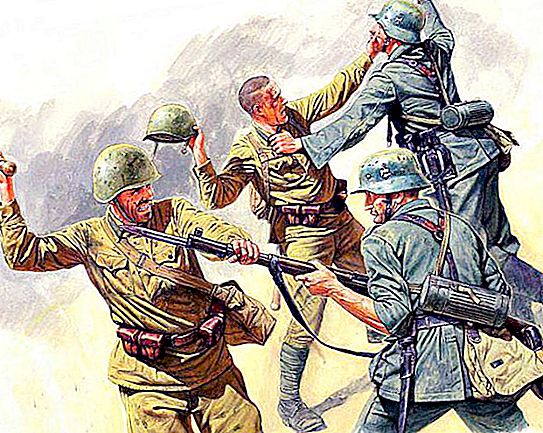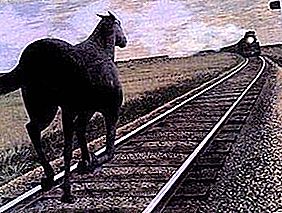MPL-50 - what is hiding under this abbreviation, most people know who are serving or who once served in the army, for the rest this is just a set of letters. But the phrase "sapper shovel" is known, probably, to everyone. And they mean by this name, without knowing it, namely MPL-50.

Sapper shovel for infantry
MPL - M-small, P-infantry, L-shovel, and the number 50 means the total length of the instrument, equal to 50 cm. It is the infantry shovel, not the sapper one, as it is mistakenly called by the people. In this regard, it is worth noting that the armament in the Russian army as a trench tool has a BSL-110 shovel - a sapper shovel, only a large one. A small sapper shovel simply does not exist.
A small infantry shovel has been serving in the Russian army for almost a century and a half and has become such a familiar attribute for a soldier that many are convinced that it was born in Russia, but this is not so.
When did the MPL appear
In the mid-19th century, progress in the development of firearms made us think about protecting infantry soldiers. The solution to this problem was simple and reliable. And it consisted of a small shovel invented by the Danish military, infantry captain Linnemann. The military received a patent for the invention in 1869, and in 1870 the Danes already adopted it in their army.

The novelty soon found its place in other European armies. But before it was subjected to all kinds of tests, which it passed with dignity, and in terms of efficiency it lost only one third to a large sapper shovel, while far surpassing it in compactness and versatility.
In service in the Russian army, Linnemann's spade was adopted in 1874. Over time, it was finalized, the material of manufacture, size changed, but in general the design remained almost identical to the original. In this form, the shovel has reached our days as an individual wearable engineering tool of a soldier.
MPL design
A steel bayonet and a wooden handle are the two components of the MPL-50. Everything is extremely simple, but even these two details are thought out to the smallest detail.
A shank (handle, handle, handle) is machined from hardwood. It is carefully processed and not painted. After processing, the surface of the handle remains slightly rough, after which it is fired and treated with a sandpaper. The result is a holder that does not slip in the hands and, when handled skillfully, does not rub calluses.
The shape of the bayonet MPL can be 4- and 5-angled, sometimes there are also oval ones. The shovel MPL-50 has a pentagonal steel bayonet with a width of 15 cm, a length of 18 cm, coated with anti-reflective paint. The blade is sharpened on one side. This sharpening method makes it easy to chop the roots and generally facilitates work when digging a trench.

A small infantry shovel is worn in a special case, usually made of thick tarpaulin. On its rear surface there are two loops for attaching the tool to the waist belt.
Application MPL-50
Naturally, the main purpose of the MPL is to dig trenches. A spade length of 50 cm was not chosen by chance. Thanks to such dimensions and design, it becomes possible for a soldier to self-dig from various positions: lying, sitting or kneeling, depending on the emerging combat situation. A soldier with skill in working with a shovel digs a trench for firing from a prone position in 8-12 minutes. A rookie copes with this task on average in half an hour. Such results underscore the importance of training young soldiers to master the MPL, since in a real battle even a small time delay can cost them their lives.
The use of MPL as cold steel has been known since the First World War. Especially for hand-to-hand combat, the bayonet of a shovel was sharpened from all sides, turning an engineering tool into a dangerous, double-edged and at the same time compact ax.

Moreover, the MPL-50 balancing is performed in such a way that it is perfectly suitable for throwing. Since the shovel is superior in weight and size to the throwing knife, after hitting a live target, it leaves the most serious consequences.
The ingenuity of soldiers found a small infantry shovel and quite peaceful use. In the field, it is often used as a camping pan to heat food. And when overcoming water barriers on improvised boats (logs, rafts, etc.) - as an oar.




